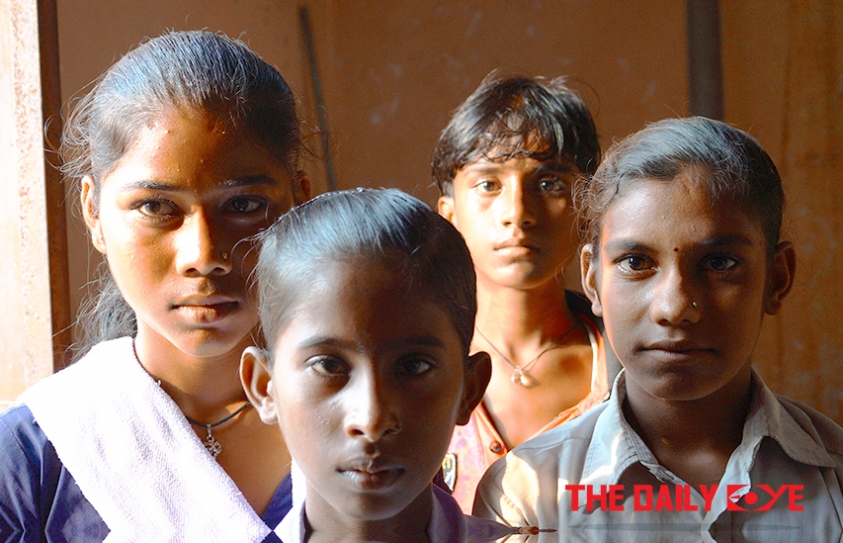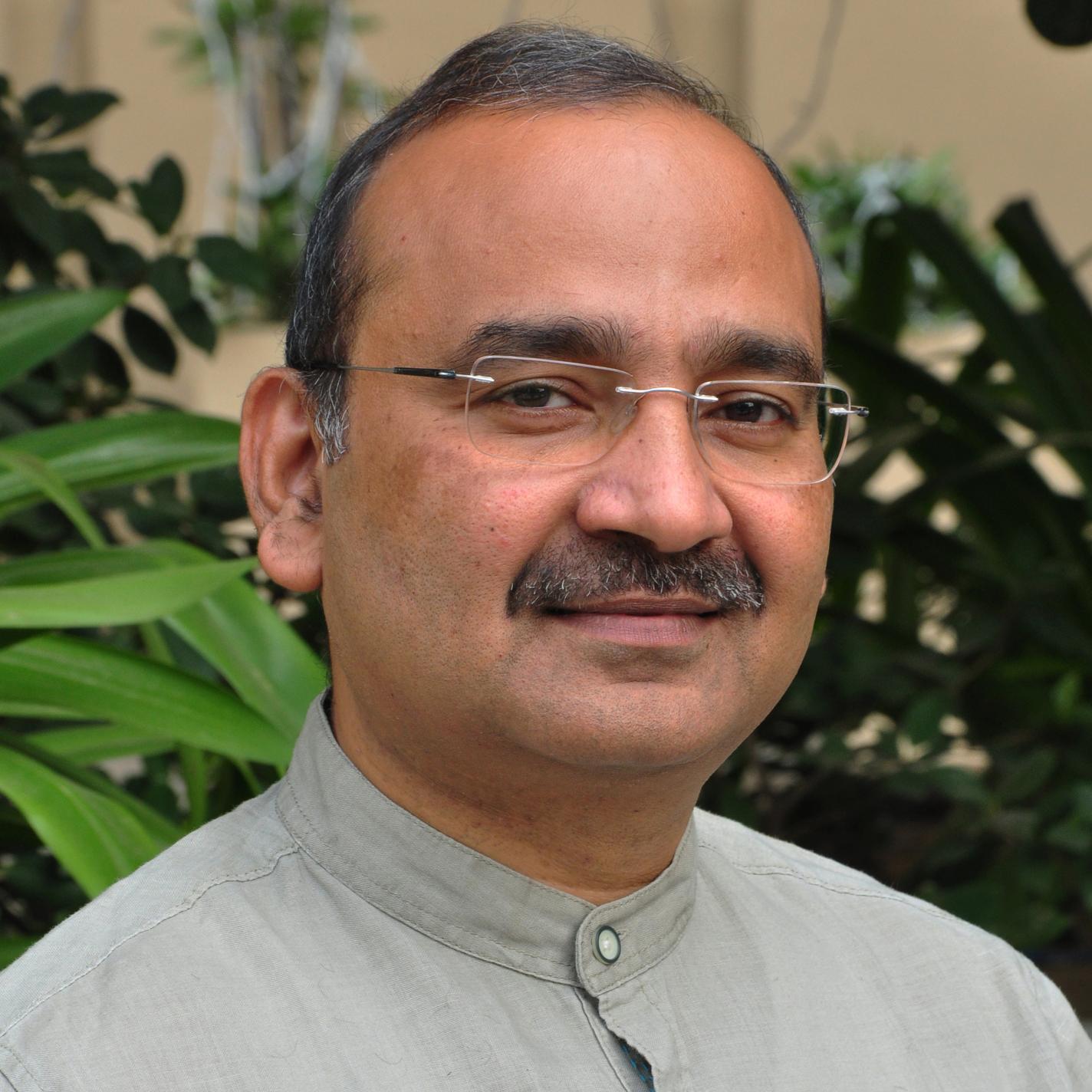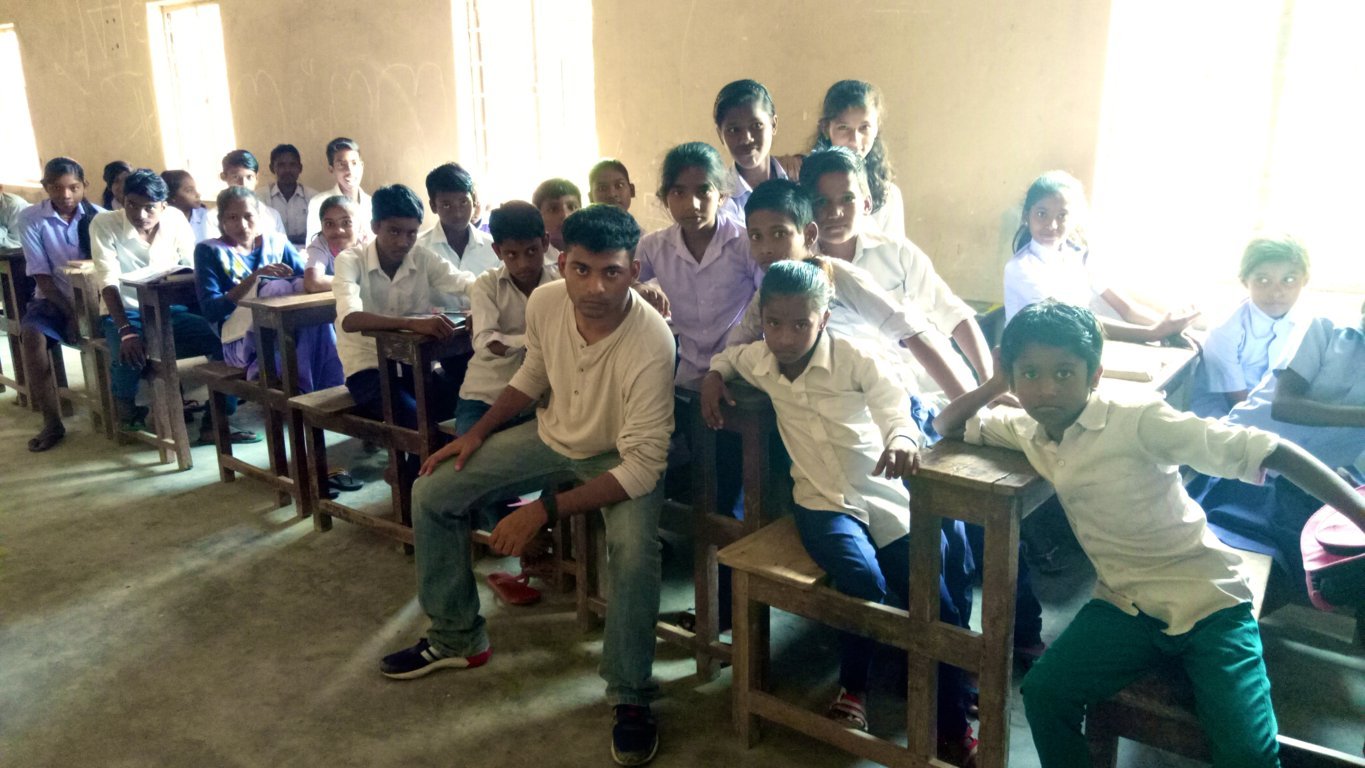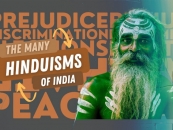
The Little Directors of Dr Shravan Kumar
by Vinta Nanda November 2 2017, 5:28 pm Estimated Reading Time: 11 mins, 29 secsDr. Shravan Kumar, CEO, Children’s Film Society, India says,“Our concept of Little Directors has been one of the most unique experiments anywhere in the world and is being conducted in a professional environment through trained experts. Since we launched this concept in the 18th International Film Festival in 2013, it has become a star attraction in our Festivals, and we now received 100s of entries from dozens of countries every year for this program. We are extremely happy that World Bank supported this program and they will also be conducting an impact evaluation study based on it. As a part of this program, children will make a 3 to 5 minutes short film on the issues concerning Water & Sanitation and Gender, specifically related to Swachh Bharat Mission. Children will produce, create, act and develop these films after learning the nuances from the workshops. As a part of training the creators have used CFSI films like Pinti Ka Sabun (a film on hygiene), Bandu Boxer (a film on rural development) and Pani Re Pani (a film on water sanitation) as tools to expand on conversations regarding the issues with the children. Introduction and discussion on eight important issues related to water and sanitation and gender with respect to Bihar was undertaken with children. Besides this, the children were also provided a training on storyboarding, budgeting, shooting and editing (post production) etc. during the workshop.”

It was the summer of 2014 and I was meeting my friend Vani Tripathi Tikoo after a really long time. I would see her on television debates but she was clueless about where I was and what I was up to besides what she could know from my posts on social media and through common friends, so it was but inevitable for her to ask me why I wasn’t telling stories anymore?
I told her about the Asian Centre for Entertainment Education which I had launched and co-founded with my partner Augustine Veliath about a year earlier, and I also told her about our flagship program, The Third Eye which is in partnership with Hollywood Health and Society, Norman Lear Centre, University of Southern California Annenberg.
She listened to me long and hard, and then said to me, “Vinta I want you to meet Dr Shravan Kumar. He is the CEO of the Children’s Film Society of India (CFSI) and I want you to see him immediately”. She gave me his phone number and sent him a text at the same time. Then she asked me to call him the very next morning.
I trust Vani so I called Dr Shravan Kumar the very next morning. He was welcoming, he gave me time to meet him immediately and he heard me out about all the things that we were doing within the industry of entertainment. Since he was the first entertainment professional to hear me out and give me all the space I required to talk about the importance of media literacy and entertainment education, I was ecstatic. It had been a year since I had been knocking on the doors of all the CEO’s of the mainstream broadcasting channels and television networks, but not one had given me time enough. I had been politely handed over to someone else down the line and the chain never ended; and a year later, I was tired, disheartened and disappointed.
But not now, because here was one of the most gentle and softly spoken men whom I had ever met, telling me that he needed me and that he was very excited to meet me because he believed in and was promoting similar values on a much larger scale than anybody could’ve imagined.
At the first meeting itself, Dr Shravan Kumar shared his vision with me. He told me that where he sits is one of the most important posts that the Government of India can offer any of its administrative employees. He told me that he was going use this opportunity to ensure that every child in the country is able to assert his or her fundamental right to access entertainment. He also told me that for the last 55 years since our first Prime Minister Jawahar Lal Nehru had established CFSI, the best talent across generations had made films for children, but not even one film from the stellar library of 250 titles that belonged to CFSI, had been honored with a commercial release.
It was only after Dr Shravan Kumar had joined CFSI in 2013, that the first film produced by this autonomous organization under the Ministry of Information and Broadcasting, Government of India, Gattu, was released in theatres.
Wow, I had said, and then continued, “This in a country of 1.2 billion people of which 34% are under the age of 14?”
I went home that day and deep dived to data. I got my entire team to start rummaging through every bit of statistic they could find to figure out what we were offering in the form of entertainment, to more than 400 million children, under the age of 14, in our country.
Our then Director Programs Deepa Bhalerao started hunting for leads but there were barely any. However, we waded through many secondary sources, some to do with entertainment, some not (we looked at health, family planning, education and even the census data’s).
Finally we discovered that only 14% of the overall entertainment that India offers to its populations across diversities of cultures and languages, was that for its whopping 30.4% population which was of children under the age of 14. Then we also discovered that films for children are being made mainly by the Children’s Film Society of India since 1955. Very few Indian films for children are made in Bollywood, and that there are only 22 TV channels out of the over 800 channels in India that are reaching content to the children of our country.
Most channels for children ran animated content and only 13% of animated entertainment watched by children in India is being produced domestically; 87% is imported. So who was it that we were making all our 24/7 entertainment running across 365 days for; was the BIG question?
According to Dr Shravan Kumar, a commercial release for the film Gattu was just a simple beginning for him. His gaze was on that 36% population of India, to whom media and entertainment was still elusive. He was determined to reach those 350 million children under the age of 14, who had little or else no access to theatres, television or for that matter, any other form of entertainment, mobile or otherwise.

He said had a plan up his sleeve.
No, he was not going to only take all the entertainment at his disposal to those children who were excluded from the mainstream. That was just a part of his bigger idea which was as a matter of fact, to make the voices of those excluded children heard by the privileged middle and upper classes who were sinking in a flood of cacophonous and mindless storytelling; drowning in senseless schlock that had already overwhelmed our cultures, our traditional comfort with plurality, our sensibilities as well as our reasoning.
He had already launched the Little Directors program in which children were going to be mentored to tell their stories to all those others who didn’t think that they counted. Dr Shravan Kumar went to the North Eastern States of India where children had become mere statistics. He went to the heart of conflict zones like Jammu and Kashmir, where children were going to be left behind by our times, and he went deep into forests and tribal belts where children were otherwise going to be forgotten, and he got children to learn how to make films and tell their stories to the rest of the world.
In the last five years, Dr Shravan Kumar has scaled the impossible. He has taken his library of films to 2477 different places, to villages, government schools and tribal communities and reached entertainment, which they could never have seen before, to 498,488 children.
In the North Eastern States of India, he has now held over 400 shows and entertained 150,000 children. His teams, led by Head of Marketing Mr Mohan Herkel and Creative Head, Shruti Srivastava, have conducted screenings and workshops in dilapidated village school classrooms, in open spaces, in the open fields, in slums and on the roadsides; and in each of the shows which were led and followed by interactivity, children were given the opportunity to discover something which was otherwise so distant to them; they could have never dreamed that they could get to speak about it.
At a screening for government school children in Patna, Bihar, I was witness to a 11 year old child break down and cry, as he expressed his helplessness, told us about how he loved to sing, but was burdened with the responsibility of a widowed mother, because of which he was unable to explore his talent any further.
It was but obvious that when I happened to be at the Morelia International Film Festival at the end of 2015, I talk about Dr Shravan Kumar and his commitment to the children of India to my boss at The Third Eye program, Kate Folb, Director Hollywood Health and Society (HH&S) and to all my colleagues there. Victor Hugo Orozco Olvera, an economist with the Development Impact Evaluation (DIME) unit of World Bank’s Development Research Group was intrigued to hear about him, and he asked me to invite Dr Shravan Kumar to the one week long Impact Evaluation workshop he was designing and which was to be held in Mexico City a few months later.
Dr Shravan Kumar and I found us at this life changing experience in the May of 2016 and we, at HH&S and The Third Eye got this great opportunity to liaise as well as facilitate two stellar partnerships for CFSI, one with the World Bank and the second with Cinepolis Foundation.
The meetings held between Dr Shravan Kumar CEO CFSI, Victor Hugo Orozco Olvera Economist DIME, Arturo Cornejo Moreno Valle and Lorena Fabiola Guille Laris Cinepolis Foundation, Kate Folb HH&S, were ones that I couldn’t have imagined in my life to be facilitating, but here we were, actually just doing that.
Cinépolis, is the world’s 4th largest movie theatre circuit, operating more than 465 multiplexes with over 4300 screens in 13 countries, over 350 screens in India, and serving more than 200 million patrons annually. CFSI and Cinepolis are now collaborating to take films to all the children of India. Through this unique endeavor, films made by CFSI are being screened in Cinepolis theatres in specially planned morning shows for children from public and private schools. CFSI and Cinepolis India are reaching 45,000 children, from Government and Municipal Schools across India who will be able to see the specially chosen films in the 225 screens with a capacity of 250 persons each in 31 cities across India in the first year of their partnership.
In alliance with the World Bank, CFSI is conducting an Impact Evaluation of a first-of-its-kind media intervention in the year 2018, an intervention where filmmaking workshops will be conducted for children belonging to the most excluded communities in the Indian States of Bihar, Uttar Pradesh, Rajasthan, Odisha and Jammu and Kashmir, and in which the children will make films themselves.
Taking his pet Little Directors project forward, a pilot for this unique intervention is now underway. ACEE and its flagship program The Third Eye, guided by the World Bank, and in partnership with CFSI have conducted 5 filmmaking workshops in the State of Bihar, in October 2017. These workshops for the pilot study were held in Patna at Rainbow Children’s Home and Saidpur Slum, in village Nunpur District Beguserai, in Lakhiserai and in Nawada.
Filmmakers Denver Fernandes (Lead Mentor), Aaron Edwards, Azeemuddin Sayyed and Debroop Chakraborty worked with the Little Directors who expressed their hopes, fears and anxieties with regard to issues surrounding Drinking Water and Sanitation and Gender. ACEE’s Program Outreach Coordinator, Anand Tiwari, supported them.
Creative Producer Aakanksha Solanki, Manager Programs Sukanya Sudarson and Executive Producer and COO ACEE Hussain Kalvert led the team and in partnership with Bihar State Coordinator Sanjeev Kumar who is one of the editors at Vishwa Samvaad Kendra, Patna.
The preliminary findings of a pilot study which was conducted alongside the workshops by Director Programs ACEE Dr Purnima Mehrotra, reveal how the process in which children are given the freedom to express themselves creatively, impacts not only the participants, but also their surrounding peer groups, elders and communities.
The films produced by the children of Patna, Nawada, Beguserai and Lakhiserai in the State of Bihar are Swacchta Ki Khoj (In Search of Clean India), The Story of Kachrapur (The Story of Garbage County) which is a Hip-Hop Music Video, Bachchpan (Childhood), Soch Sauchalaya (Think Toilet) and Master Ki Class (A Class For The Teacher).
Each of the films is intense exploration of where the children of Bihar, under the age of 14 are, vis-à-vis the discourse on Drinking Water and Sanitation.
As I go to publish this article in The Daily Eye, I cannot but acknowledge my friend Vani Tripathi Tikoo’s vision and for that matter what it is that she was thinking in that moment, on that hot summer of 2014 afternoon when she put me in touch with Dr Shravan Kumar.
I can’t thank her enough for putting me on a track that was very important and guiding my work towards where she already knew it would matter the most; towards our children, towards those who will be the architects of ‘The New India’ in the coming future.




-173X130.jpg)
-173X130.jpg)
-173X130.jpg)

-173X130.jpg)
-173X130.jpg)
-173X130.jpg)
-173X130.jpg)